Mumbai
Updates and Latest trends in Air Ambulance flights
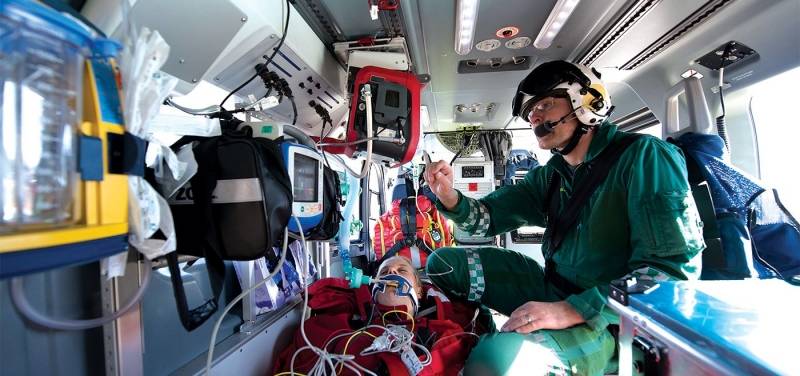
Latest updates in Air Ambulance Flights
When it comes to developments in helicopter medical interiors, it’s a case of evolution rather than revolution. The speed of innovation is governed in part by the cost and time involved in putting designs through the regulatory approval process, and also by the benefits to operators of having uniform designs across their fleets.That said, there has been innovation in aspects such as materials and lighting as producers and customers of air medical interiors continue to seek lighter, more effective solutions.
Reduced weight continues to be a key feature that customers look for in an air medical interior, according to Hans Bretscher, vice president and general manager at Aerolite.
America. The company has put its efforts into developing lightweight interiors and components to satisfy this demand.
“Complete HEMS [helicopter emergency medical services] interiors for light twin helicopters that are currently implemented are below 150 kilograms/330 pounds,” he said. “Where hot-and-high search-and-rescue capabilities are prevalent, complete interiors weigh around 100 kg/220 lb.”
As Matthew Christenson, vice president and account executive at Spectrum Aeromed, explained, weight savings allow a crew to carry more medical devices or more fuel, which can change what they can do. And while the majority of components in medical interiors continue to be produced from machined aluminum, Spectrum Aeromed has been using carbon fiber in its medical interiors for several years.
As an example, the company employs carbon fiber to make light, durable helicopter flooring. The company is exploring additional applications, said Christenson; the next step would be to do more with the main base unit of the stretcher. Alongside the potential for significant weight savings, he noted that using carbon fiber can allow the creation of shapes not possible with aluminum. Mike Slattery, president of United Rotorcraft, cautioned that the low production rates for EMS interiors could result in a high unit cost for carbon-fiber construction. For another route to produce otherwise impossible shapes, how about 3D printing? Such “additive manufacturing” could also provide weight savings, although the effort and cost of achieving certification may be prohibitive, said Slattery. However, it’s a technology that United Rotorcraft is monitoring as a possible option in the future.

Flexible solutions
According to Slattery, while some customers are looking for lighter, simpler interiors at lower cost, others need to be able to complete a range of complex missions with perhaps more team members and equipment (think isolettes and balloon pump transports) where the main concern may be functionality, not weight. He also noted that there is growing demand for interiors that can be easily reconfigured for different mission types, such as swapping from EMS to a special mission or passenger transport configuration.
For example, in July, United Rotorcraft gained European Aviation Safety Agency (EASA) certification for Leonardo AW139 and AW169 interiors that allow for easy installation and removal of seats, which can either be seats intended to transport passengers in comfort or flip-up seats that facilitate patient loading. A more extreme example of this reconfigurability is a Sikorsky S-70 Firehawk interior that can be set up for EMS litter transport, firefighting, crew transport or cargo flights, thanks not least to seats that fold down from the ceiling as required.
Cool lighting
LEDs have long been the light source of choice onboard medical aircraft, thanks to their low weight, reliability, high output and low power consumption. They also run cool, a potential advantage for the medical crew operating in a cramped cabin (just ask the medevac doctor who according to LEDtronics Inc. seared his hand on a hot halogen light bulb that then burnt out, prompting the Royal Danish Air Force to switch to LEDs back in 2004).
Slattery of United Rotorcraft said that the shift to LEDs for both interior and exterior lighting has been happening for a number of years. It’s an ongoing process, he said, noting that any lighting changes require certification.
Thanks to the widespread use of night vision goggles (NVGs), interior lights are typically filtered to be NVG-compatible, which can result in a blue-green cast. However, that could be changing.
AeroBrigham has been installing NVG-compatible LED lighting in medical helicopters for at least the past 10 years, said owner and president David Brigham. Some 18 months ago, the company introduced a unit that provides a bright, white light that’s NVG-compatible right out of the box, no filter required. It took some time to convince the NVG makers, said Brigham, but these days the firm employs the light for helicopter cabin illumination in all of its medical completions.
Medical mounts
A far less visible, but no less important, element of these interiors can be found in the mounts to secure medical equipment. Christenson of Spectrum Aeromed reflected that working on new mounts is a continuous process, given the ever-changing range of devices available to crews.
Most of the customers of Wysong Enterprises prefer to keep their aircraft standardized for training purposes, pointed out Steve Wysong, president. However, mounts are an area where customers do request changes, he said: “We do get requests now and then to mount a different medical monitor in the rear cabin of the [Bell] 407 . . . The monitor mounts are approved in a way that if a current medical piece of equipment is changed, we can adapt those items to the STC [supplemental type certificate] mounting brackets easily.”
Giving a specific example, Kristen King Holmes, director of marketing for Metro Aviation, commented that ultrasound equipment is becoming more mainstream and customers are increasingly asking for ways to secure it in the aircraft.
Meanwhile, David Brigham for one is seeing a trend of moving away from mounting equipment to the interior. Observing that certifying new mounts is an expensive process, he said that AeroBrigham is increasingly seeing operators opt to take medical devices as carry-on equipment, either strapped to a seat or on the stretcher with the patient. He noted that much of this modern equipment is very lightweight, giving the example of defibrillators weighing just a couple of pounds that can be put between a patient’s legs.
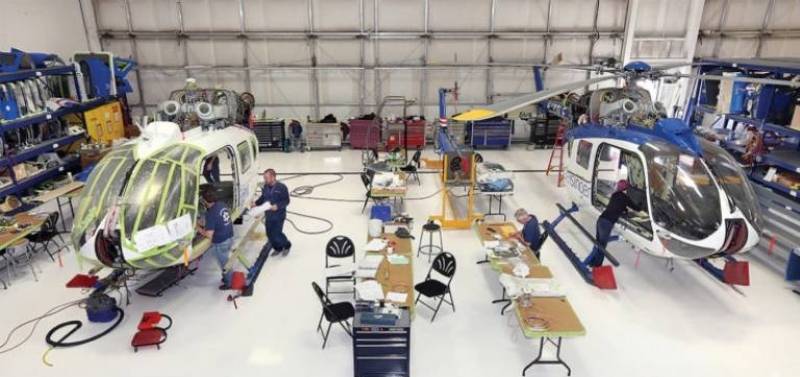
New markets
A clear shift that is occurring is in the geographic location of customers seeking helicopter medical interiors. Hans Bretscher of Aerolite America explained, “We see growing demand for HEMS interiors, not only from our existing customers in North America and Europe but also from operators in the Pacific Rim countries, China and South America. Operators in these countries demand the same sophistication in their HEMS capabilities as requested by our customers with established and long-running operations.”
This July, United Rotorcraft completed its first EMS Bell 407 for the Chinese market. Mike Slattery asserted that in the future, China will be the biggest market for rotor-wing aircraft. Speaking of the process of gaining approval from the Civil Aviation Administration of China (CAAC), Slattery explained that the CAAC analyzed the Federal Aviation Administration STC data packages as the basis of certification.
New aircraft?
It’s to be expected that as new helicopter models come onto the market, medical interiors will be developed so they can be employed in the air ambulance sector.
Bretscher commented, “With new or updated helicopters coming to market and being introduced, Aerolite is constantly answering to development trends such as roll-in stretchers, stretcher pack rack capabilities that are certified for all phases of flight, and customer-demanded integrations of sophisticated medical equipment such as balloon pumps, ultrasonic and ECMO [extracorporeal membrane oxygenation] equipment.”
United Rotorcraft gained EASA certification for its modular AW169 and AW139 interiors just this August. Speaking at the time, Frank Graham, senior director of global sales and marketing, said: “The AW169 and AW139 configurations allow for a head attendant seat, which is a cornerstone to patient care and access.”
Although the AW139 is hardly a new model, the AW169 has only recently begun gaining traction in the EMS market. While the release of an interior may follow on the heels of the introduction of a new model, in some cases the medical design work gets underway ahead of the launch of the aircraft. For example, Holmes revealed that Metro Aviation is already hard at work on a proposal for a medical interior for the Airbus H160 helicopter, EASA certification of which isn’t now expected until late 2019.
Meanwhile, both Metro and AeroBrigham report that growing numbers of operators are spurning factory deliveries and turning to pre-owned aircraft. Commenting on Metro’s experience, Holmes said: “Another big trend is refurbishments instead of people purchasing new aircraft. About half of this year’s completions have been refurbished aircraft.”
Meanwhile, Brigham said that over the last three years in particular, his firm has been helping start-ups to source used single-engine helicopters, adding that even with repainting, reconfiguring and thorough mechanical servicing, the price tag for a pre-owned machine might be some two-thirds lower than for a new machine. Smaller start-ups in particular are adopting single-engine helicopters, he said, as they favor models that are cheap to acquire and operate as they look for ways to compete in the marketplace.
Customer demand
At Metro Aviation, there have been changes in the equipment that customers are looking for, explained Holmes. “As far as loading goes, we’ve developed a ramp for the H135. It’s been available for a couple of years, but we’ve seen an increase in requests for it. It assists with loading the patient stretcher into the aircraft and was originally designed for an overseas customer that was having trouble getting the stretcher into the aircraft,” she said.
One current area of work at Metro involves accommodating Stryker EMS stretchers, she added: “We’re developing a Stryker Performance manual load solution for the H145.”
It’s fair to say that while most of the work in helicopter medical completions involves work on the interior, some of the changes that providers like Metro are seeing are located outside the cabin or involve communicating with staff on the ground. For example, said Holmes, Metro has seen a rise in the number of requests for external cameras fitted in the tailboom area.
And the company is coming to the end of a project to install IRIS, a flight data monitoring, tracking and communications solution from Outerlink Global Solutions that among other things will allow medical crews to transmit live electrocardiogram data to receiving hospitals while the patient is still in flight.
About Mumbai
Location of Mumbai:
Latitude: 19.017Longitude: 72.857
Details of Airport Chhatrapati Shivaji International Airport in Mumbai :
IATA: BOMICAO: BOM
Latitude: 19.08869934
Longitude: 72.86789703
Altitude: 39
Time (UTC): 6
DST: N
Timezone: Asia/Calcutta
Country: India
Mumbai (formerly called Bombay) is a densely populated city on India’s west coast. A financial center, it's India's largest city. On the Mumbai Harbour waterfront stands the iconic Gateway of India stone arch, built by the British Raj in 1924. Offshore, nearby Elephanta Island holds ancient cave temples dedicated to the Hindu god Shiva. The city's also famous as the heart of the Bollywood film industry.
Mumbai is a tertiary care center and receive patients from North East and South India for advanced Treatment to all major tertiary care centers.
Advanced Eye Hospital and Institute
Asian Heart Institute
B
B.D. Petit Parsee General Hospital
Bhabha Hospital
Bhaktivedanta Hospital
Bombay Hospital
Breach Candy Hospital
C
Cama Hospital
Cooper Hospital
Currae Hospital
G
Gokuldas Tejpal Hospital
H
Holy Family Hospital, Mumbai
Holy Spirit Hospital (Mumbai)
Hurkisondas Hospital
J
Jaslok Hospital
JJ Hospital
K
KEM Hospital
Kokilaben Dhirubhai Ambani Hospital
L
Lilavati Hospital and Research Centre
Lokmanya Tilak Municipal General Hospital
M
Masina Hospital
N
Nanavati hospital
P
P.D. Hinduja National Hospital and Medical Research Centre
Parsi Lying-in Hospital
Prince Aly Khan Hospital
R
Rajawadi Hospital
S
Saifee Hospital
St George Hospital, Mumbai
SevenHills Hospital
Shroff Eye Hospital
Shushrusha Citizens' Co-operative Hospital
T
Tata Memorial Centre
U
Umrao Hospitals
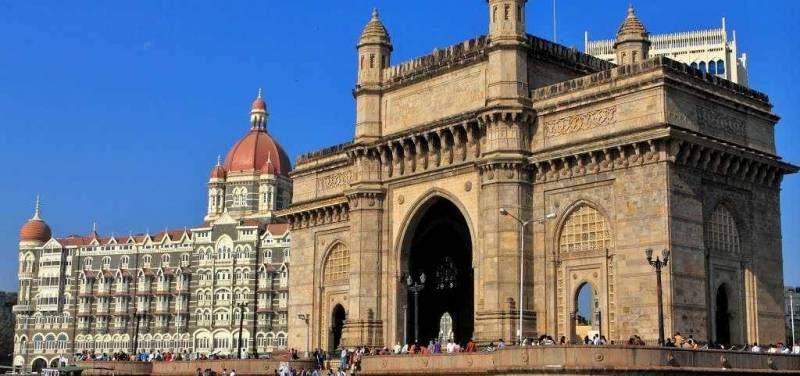
The Gateway of India is, without doubt, one of the most popular tourist hotspots of Mumbai. Sitting proudly on the Apollo Bunder, it overlooks the Arabian Sea. It is one of the defining monuments of the city of Mumbai and was built in the year 1924. The construction was undertaken by the famous architect George Wittet, to commemorate the visit of King George V and Queen Mary to Mumbai. The imposing structure of the monument is a beautiful confluence of Indian, Arabic and Western architecture and has become a popular tourist hub in the city. It is also the starting point of a number of ferry services that ply to the historic Elephanta Caves.
Nicknamed 'Mumbai's Taj Mahal', the foundation of this landmark was laid in 1911 and it was inaugurated 13 years later in 1924. The structure in itself is a made of yellow basalt and solid concrete and is embellished with numerous Muslim and Hindu motifs as well. The basalt arch of the Gateway served as the entry and exit access to India through waterways before independence and was the exit point from where the last British ship left India for England. There are statues of Swami Vivekananda and Chhatrapati Shivaji that have been installed near the Gateway as well. The view from the sea of the Gateway complex, especially at night is quite ethereal and beautiful. The Gateway of India is thus, not only a historic artefact but an example of marvellous architecture in itself!
History of Gateway of India
The land on which the Gateway now stands once belonged to a jetty that was primarily used by the fishing community of the area. Seeing its viability as a landing area, it was renovated to serve as a pier for British governors. Soon enough, it was decided that a grand gateway will be built here to welcome King George V and Queen Mary to Mumbai, and the foundation of the same was laid down March 31, 1913, by the Governor of Bombay, Sir George Sydenham Clarke. However, the final design of the Gateway was only sanctioned on March 31, 1914, by George Wittet. The constructions formally began in 1920 and it took almost four years to complete the construction of the monument.
Built in Indo Saracenic style, the Gateway of India was designed by Scottish architect George Wittet. The design is a combination of Hindu and Muslim architectural influences along with a Roman triumphal arch, which stands at a height of 26 metres. It is built of yellow basalt and concrete and the stone was sourced locally. The arch is flanked by two large hallways that have the capacity to accommodate as many as 600 people. On the other hand, the central dome of the gateway is inspired from Muslim architecture style and has a diameter of 48 feet with the apex reaching 83 feet. The gateway also has meticulously designed honeycomb structures which further support four spires that grant a unique symmetry to the facade. Steps behind the archway give an expansive view of the Arabian Sea as well.
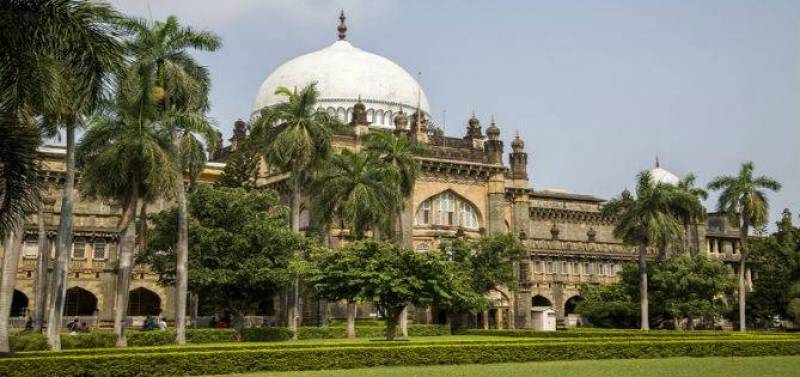
Prince of Wales museum, Mumbai Overview
The Prince of Wales Museum is a splendid structure situated in Mumbai and is regarded to be one of the heritage buildings of the city. The foundation stone of this edifice was laid down by the Prince of Wales on the 11 November 1905, and it was established as a museum on 10 January 1922. The facade of the museum is a sight to behold in itself and sits in the midst of an expansive green garden. Adorned with stunning stone and lattice work, the architecture of the Prince of Wales Museum is a blend of Indian, Mughal and British engineering styles. Inside, the museum holds almost 50,000 of some of the most exquisite artefacts relating to the rich and diverse history of India.
Now known as 'Chhatrapati Shivaji Maharaj Vastu Sangrahalay', The Prince of Wales Museum is a Grade I Heritage Building of the city and is counted amongst one of the most prominent museums of India. The complex exhibits a myriad collection of ancient artefacts, artwork and sculptors of the country which give a unique insight into our past. The building also underwent a major renovation after which several new galleries adorning the artworks of Hindu God Krishna, textiles and Indian traditional costumes were opened. Preserved in its best form, the Prince of Wales Museum is a wonderful manifestation of India's glory and rich past.
National gallery of Modern Art, Mumbai Overview
A paradise for art lovers, National Gallery of Modern Art (NGMA), Mumbai is a famous art museum possessing a magnificent collection of paintings, sculptures and artefacts since 1996. The multitude of artwork present in this charismatic gallery has drawn millions of visitors and left them awestruck. It is governed by the Department of Culture, Government of India and has over the period become a popular tourist attraction as it very convincingly depicts the modification of artwork in the field of visual and plastic arts. A blend of art and culture, this gallery houses the artworks of phenomenal sculptors, artists and painters including the legendary Pablo Picasso who is considered as the epitome of art and painting. The oldest artwork is known to be around 160 years old. The ancient artefacts such as statues and mummies from Egypt have also a played a crucial role in rousing the curiosity of the visitors.
The National Gallery of Modern Art also organises various art exhibitions which provide an intriguing platform to both the artists and the art lovers as the artists get a remarkable opportunity to showcase their talent while the art lovers can explore and quench their thirst for art. The gallery is located near Regal Cinemas in Colaba, South Mumbai. It showcases some of the oldest artworks, dating back to 1857 and is considered one of the best in India.
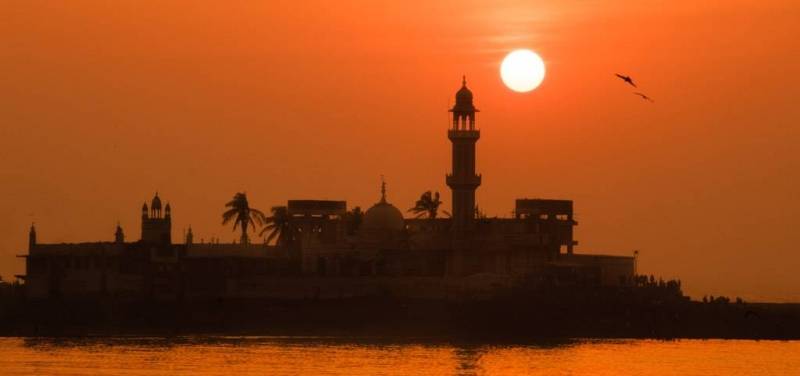
Haji Ali Dargah, Mumbai Overview
Situated on the backdrop of a beautiful view of the Arabian sea is the shrine of Haji Ali, dedicated to the wealthy merchant turned who gave up his worldly belongings and turned into Muslim Sufi saint after a trip to Mecca. Haji Ali Dargah is located on a small islet that is off the southern coast of Mumbai near Worli. People from all walks of life and religions come here to seek blessings. The Dargah can only be accessed during the low tides via a causeway that is surrounded by the sea on all sides. At night, the view of the shrine lit up in the distance with nothing but the sea around it, is a divine sight.
Built of glass, the tomb is a beautiful illustration of the Indo-Islamic style of architecture. A marble courtyard contains the central shrine. The tomb within the mosque is roofed by a brocaded red and green cloth, supported by an exquisite silver frame and marble columns. The main hall has marble pillars engraved with creative mirror work: blue, green, yellow chips of glass arranged in varied designs and Arabic patterns which spell the ninety-nine names of Allah. As per Islamic customs, there are different praying rooms for ladies and gents.
Haji Ali belonged to Bukhara, which lies in present-day Uzbekistan. This shrine has a mystical story attached to it. According to legends, Sayyed Peer Haji Ali Bukhari once came across a poor woman crying on the road and holding an empty vessel. Upon inquiring about the matter, she told him that she had spilled the oil she was supposed to be carrying home and was now afraid that her husband will punish her. He then accompanied her to the spot where she had spilled the oil and prodded the ground and oil came gushing out. The woman was delighted and went home happily. Later, recurrent dreams indicating that he had injured the Earth haunted him and his health began to deteriorate. He then decided to travel to India and decided to stay here so as to spread the word of Allah and Islam.
From that point of time till the end of his life, Haji Ali dedicated his life spreading the wisdom of Allah and devotees would regularly visit him. Before he died, he instructed his followers that they shouldn't bury him immediately, rather they should drop his shroud in the ocean and bury him where it is found. In accordance with his wishes, the Haji Ali Dargah was built in the year 1431. According to another belief, Haji Ali donated all his wealth for a journey to Mecca and died in between. Miraculously, the casket carrying his body floated back to Arabian shores and got stuck in the twine of rocky islets just off the shores of Worli.
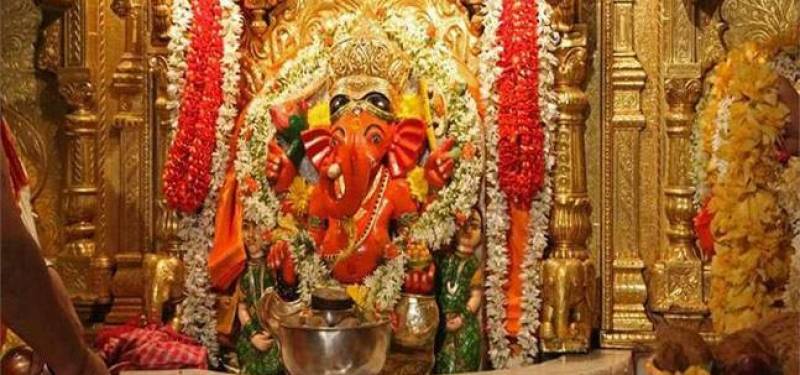
The Siddhivinayak Temple in the Prabhadevi area is a revered shrine dedicated to Lord Ganesha and is one of the most significant and frequented temples in Mumbai. This temple was built in the year 1801 by Laxman Vithu and Deubai Patil. The couple did not have any children of their own and decided to build the Siddhivinayak temple so as to fulfil the wishes of other infertile women. Interestingly, the statue of Lord Ganesha here is believed to be self-manifested and grants wishes.
The Temple has a small sanctum housing the idol of Shri Ganesha, which is about two and a half feet wide and made out of a single piece of black stone. The temple has attained a popular status not only because it is believed that the Ganesha in the temple is especially revered, but also because of its popularity with Film stars and the bigwigs of the industry. It is also the richest temple in Mumbai as it begets INR 100 Million in donations each year from devotees across the world.
The story behind the construction of the Siddhivinayak temple is that of faith and belief in the Lord. The building was funded by rich Agri woman named Deubai Patil, who did not have any children of her own. She decided upon building a temple dedicated to Lord Ganesha so that he may fulfil the wishes of other childless couples and bless them with children. The construction of the Siddhivinayak temple was completed on 19 November 1801, with the original structure being a square edifice adorned with a dome - shaped spire. Ramakrishna Jambhekar Maharaj who a disciple of the Hindu saint Akkalkot Swami Samarth, buried two idols in front of the present idol upon the instructions of the Swami. As was prophesied by Swami Samarth, a Mandar tree sprouted from the buried idols with the image of Svayambhu Ganesha in its branches after a period of 21 years.
The imposing structure of Shree Siddhivinayak temple comprises of a primary 'Kalash' which towers to a height of 12 feet, three reaching up to 5 feet and 33 others which stand at a height of 3.5 feet. Thus, 37 gilded domes embellish the main temple complex. The old part of the Siddhivinayak temple has a hall, the main sanctum, a verandah and a water tank as well. The new complex of the temple was built as a part of renovations so as to enhance the magnificence of this shrine. The architect Ar. Shri. Sharad Athale of SK Athale & Associates made a study of the temples in Rajasthan and Tamil Nadu before finalising the design of the temple. After making the necessary arrangements, the construction of the Siddhivinayak temple commenced in the year 1990. The old idol was kept intact whilst a multi angular six - storey structure was built over the gold plated domes. Three main entrances leading up to the interior were constructed and the crown of the temple was redesigned as well. After meticulous work that was spread over a timeframe of three years, the construction gave way to the Siddhivinayak temple as we know it today.

Global Vipassana Pagoda, Mumbai Overview
It is tough to imagine that one of the quietest and most peaceful spaces can exist right in the middle of the busy suburbs of Gorai in Mumbai. The Global Vipassana Pagoda is a meditation hall shaped like a dome with a capacity to seat of 8,000 devotees and Vipassana practitioners. Along with admiring the serenely mesmerizing Pagoda located on a peninsula between Gorai creek and the Arabian Sea. Another interesting facet of the monument is that it has been completely through donations. Visitors can take a short 10-minute Aanapana Meditation session to experience how invaluable the technique of meditation is and then decide if they want to enrol for a long term course. No matter what the verdict is, a trip to the Global Pagoda will be worthwhile.
The Global Vipassana Pagoda was built as a token of gratitude towards a Vipassana teacher and Accountant General of Independent Burma, Sayagyi U Ba Khin, who was instrumental in bringing Vipassana back to its country of origin after it ceased to exist in India. Many visitors frequent the Global Pagoda during the stressful and painful phases of their lives and manage to achieve total harmony in the chaotic times of today. It is also considered to one of the seven wonders of the state of Maharashtra.
The Global Pagoda's planning began in 1997, but the actual construction started only in 2000. The idea of constructing a Global Pagoda was proposed by Shree S.N.Goenka, to spread the true teachings of Lord Buddha. Over the years, religious dogmas prevailed, and the correct path of Dhamma was forgotten. These lessons had to be instilled again in the minds of people who were blinded by the religious dogmas and the introduction to an improved way of life was required to increase tolerance and maintain peace and harmony in the world.
Acharya Goenkaji firmly believed that the Pagoda would serve as a helpful vehicle to spread the true meaning of Dhamma and inculcate the age-old technique of Vipassana that ceased to exist nearly two million years ago. For the exemplary work put in by Acharya Goenkaji, he was awarded the title of Padma Bhushan in the year 2012 on the occasion of Republic Day. A little over a year later, on 6th June 2013, the Global Pagoda was included in the list of the Seven Wonders of Maharashtra for its development, architecture and purpose.
The Global Vipassana Pagoda has been constructed on 13 acres of land and is an illustration of the traditional Buddhist architecture with traditional Burmese designs. The Burmese designs have been included in the structure as a sign of respect and gratitude towards Myanmar for preserving the practice of Vipassana Meditation. The dome-shaped pagoda is a combination of ancient and modern Indian technology, and its shape is a replica of the Shwedagon Pagoda (Golden Pagoda), Myanmar, which makes the structure strong enough to stay put for at least a thousand years.
The entire structure is covered in gold coloured paint, and the spire or the shikhara of the pagoda is covered in real gold that was donated by the Burmese. The spire is topped with a decorative piece that resembles an umbrella. The humongous inner dome enables 8000 people to practice Vipassana meditation together at one time. The entrance doors are made of wood that has been hand-carved intricately in Myanmar.
The foundation of the structure is made of Basalt rocks, and the dome is made from sandstone that was brought from Rajasthan. Each sandstone block weighs around 600 to 700 kilograms and is secured in place with the help of bricks designed to interlock. These uniquely designed bricks and lime mortar hold the sandstone in place and help the structure stand for several years. The large pillar-less dome, in the centre, has a height of 29 meters. The entire structure of the pagoda is 96.12 meters tall. The interior of the pagoda is hollow and serves the purpose of a huge meditation hall; which covers an area of 6000 square metres. The top of the pagoda is completed with a large crystal.
Beginner Course: The beginner course is a 10-day course during which they have to follow the course rules and regulations that include adhering to the timetable, not harming any living being, no sexual misconduct, no lies and no consumption of intoxicants. The students practice ten hours of meditation every day (includes regular breaks). The first three days are to develop concentration through Aanapana and the next seven days are for complete Vipassana Practice. On the last day, the Metta Bhavana technique of meditation is taught and practised. These courses are bilingual and can be attended by participants who do not understand regional languages.
10-day Executive Course: These courses are introductory courses planned especially for Business Executives, Entrepreneurs and Government Officials
Old Students Short-term Course: The participants who have completed at least one 10-day program are considered as old students. They can enrol for a 3-day short course each year to stay updated with the technique.
Advanced Courses: This includes the same timetable as that for the beginner courses, however, the duration and the intensity of meditation is a little more advanced. Participants can choose between 20, 30, 45 and 60 days of course periods.















